While the Mississippi River is often regarded as one of the most powerful and treacherous rivers in the United States, other rivers around the world can give the Mississippi a run for its money in terms of danger. When it comes to size, flow, and wildlife, rivers across the world like the Congo, the Amazon, and the Ganges are forces to be reckoned with. From floods to dangerous wildlife, many humans have lost their lives to some of the most fatal rivers in the world.
Explore 15 rivers that are even more hazardous than the mighty Mississippi.
Yangtze River, China

The Yangtze River is the longest river in Asia.
©iStock.com/martinhosmart
As the longest river in Asia and the third-longest river in the world, the Yangtze is known for its unpredictable flooding, strong currents, and dangerous gorges. The combination of these factors has led to numerous fatalities and the destruction of entire villages. The most significant dangers the Yangtze River poses to humans are flooding and pollution. In fact, the Yangtze is to blame for nearly all of China’s floods.
The Yangtze River’s death toll continues to climb, with a massive natural disaster in 1931 that decimated the surrounding villages and took the lives of hundreds of thousands of Chinese residents — and displaced millions.
Flooding in the Yangtze happened so commonly due to deluges of rain that would overfill the river and spill over the banks onto the adjoining plains. In recent years, floods from the Yangtze have become less and less common as portions of the once-large river have dried up.
In addition to flooding, the Yangtze River ranks as one of the most polluted rivers in the world. While not as polluted as China’s other large river, the Yellow River, the Yangtze River suffers from eutrophication from the land’s runoff, resulting in water with less oxygen. Marine life has already struggled to survive in the Yangtze and its worsening state threatens the drinking water and safety of swimmers who choose to take a dip.
Congo River, Africa
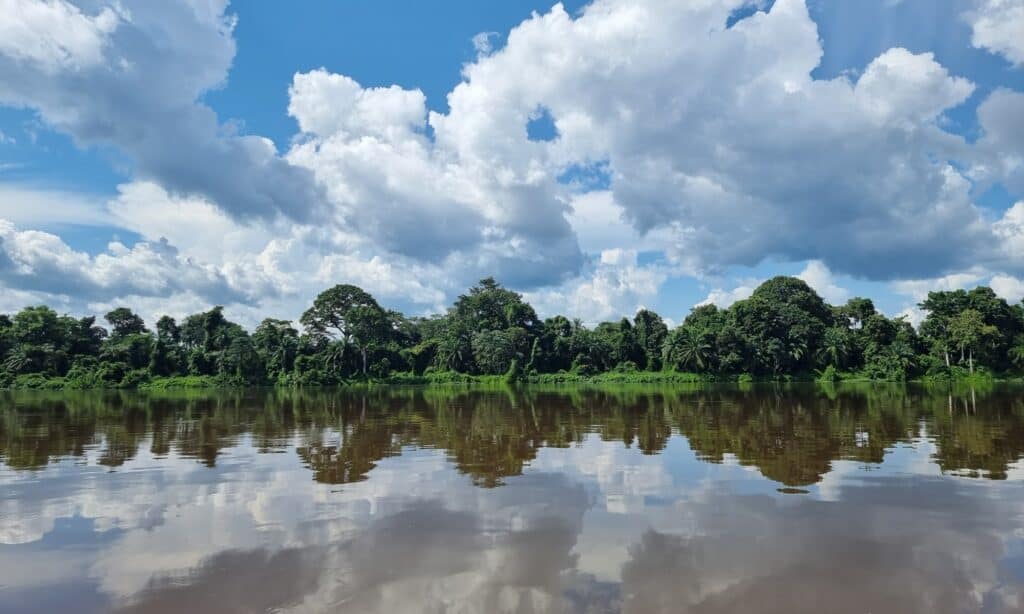
The Congo River is unsafe for humans to swim or drink directly from.
©iStock.com/Fanny Salmon
The Congo River might rank second for the largest river in Africa, but it holds the title for being the world’s deepest river with depths over 700 feet. The most significant dangers the Congo River poses are waterborne disease and wildlife.
Typhoid and cholera are two waterborne, diarrheal diseases found in the Congo River and its corridor. These diseases are endemic to the region and dangerous to contract. The rapid loss of fluids and electrolytes caused by cholera can lead to kidney failure, severe dehydration, and death in a matter of hours.
As for wildlife, the Congo River Basin teems with creatures that pose risks to humans. While the marine life at the deepest depths won’t come into contact with weary travelers trying to cross the river, the crocodiles, snakes, gorillas, and pointy-toothed fish (like the goliath tigerfish) will notice an outsider immediately. These wild animals can and will attack humans.
In addition to the illnesses and wildlife apparent in the Congo River, parts of the river are impossible to pass and should not be attempted by humans. While the river is deceptively slow-moving in some parts, the Lower Congo hurtles 1.25 million cubic feet of water into the Atlantic Ocean every second.
Amazon River, South America
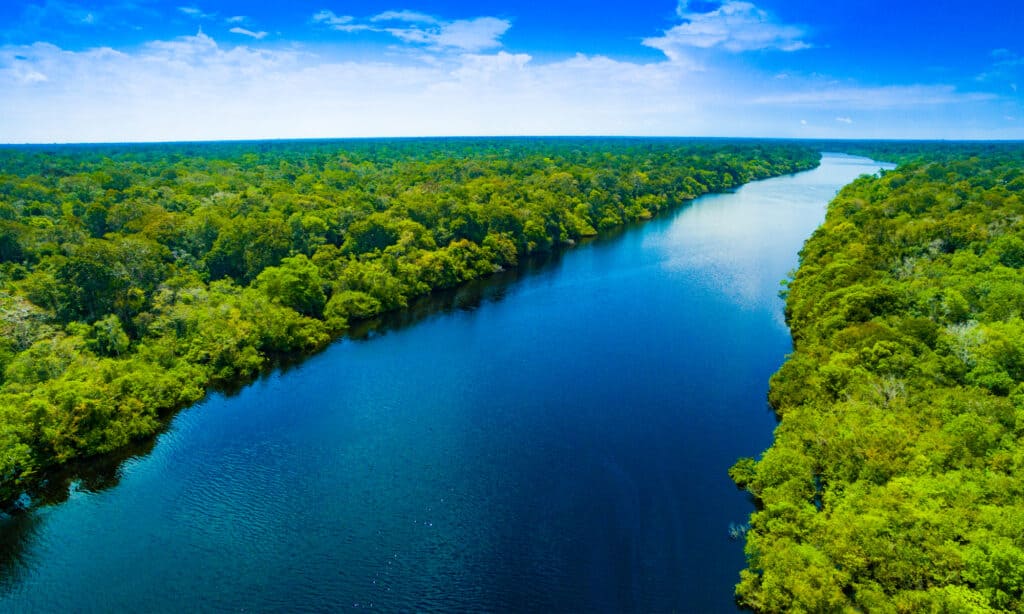
Long and dangerous, the Amazon River teems with predators.
©worldclassphoto/Shutterstock.com
The Amazon River is not only the largest river in the world — it’s also one of the most dangerous. The Amazon’s extensive network of tributaries, dense vegetation, and lurking predators make it a perilous environment for both humans and wildlife.
Poison abounds in the Amazon, with dozens of deadly creatures ready to inject prey with debilitating toxic venom. While not all are fatal, creatures in the Amazon River and rainforest that can harm humans include:
- Bull sharks
- Bullet ants
- Electric eels
- Mosquitos
- Poison dart frogs
It’s easy to get lost in the Amazon River, too, if you don’t have a knowledgeable guide or if you choose to stray from the path. As such, it’s imperative to stay on the boat you’re riding in, or follow the trail on which you’re walking. Most animals living in or around the Amazon River will tend to retreat from humans — unless they’re provoked.
Ganges River, India

Despite its pollution, the Ganges remains a sacred river to the Hindu religion.
©Vivek BR/Shutterstock.com
Despite its spiritual significance, the Ganges River has one of the highest mortality rates among rivers in the world. The river poses significant risks due to pollution, waterborne diseases, and strong currents. The deep importance of this river as both a religious site and a source of water and food compounds the issues. Half a billion people rely on the Ganges for water — though excrement and industrial waste are clearly present in it — and worldwide believers of Hindu flock to the river to receive forgiveness and attain salvation.
In 2023, experts asserted that pollution in the Ganges River is linked to “India’s high rate of waterborne illnesses.” Pollution of the Ganges is centuries in the making and will be nearly impossible to undo, though efforts are underway. The pollution has turned the Ganges River into a hotbed of waterborne illness and “superbugs” that remain resistant to common antibiotics. Drinking, swimming, and bathing in the Ganges remain dangerous practices.
Zambezi River, Africa
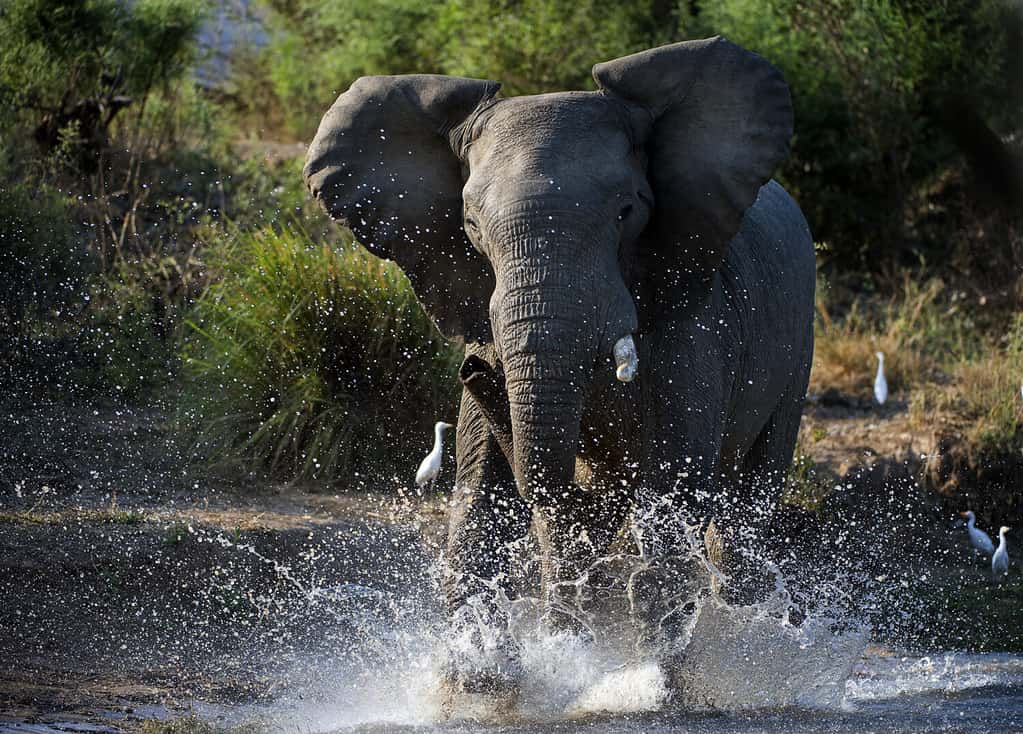
Many animals and predators inhabit the Zambezi River.
©Sergey Uryadnikov/Shutterstock.com
The Zambezi River is famous for Victoria Falls, one of the world’s largest and most striking waterfalls between Zambia and Zimbabwe. The presence of wildlife and dangerous rapids makes it a hazardous river to navigate.
Swimming in the Zambezi River is nearly unheard of outside of a few curated tourist excursions to Devil’s and Angel’s Pools, thanks to aggressive animals like hippos and crocodiles. It’s even unwise to stick your hands, feet, or other body parts in the Zambezi River while on a boat. Africa also has mosquitos and malaria, and visitors should use repellent whenever close to the river.
Outside of wildlife, the rushing water could crush a human in an instant. Tourist excursions in the water, including white water rafting, are closely monitored and run when the water level is low enough to not cause fatal injuries.
Colorado River, United States
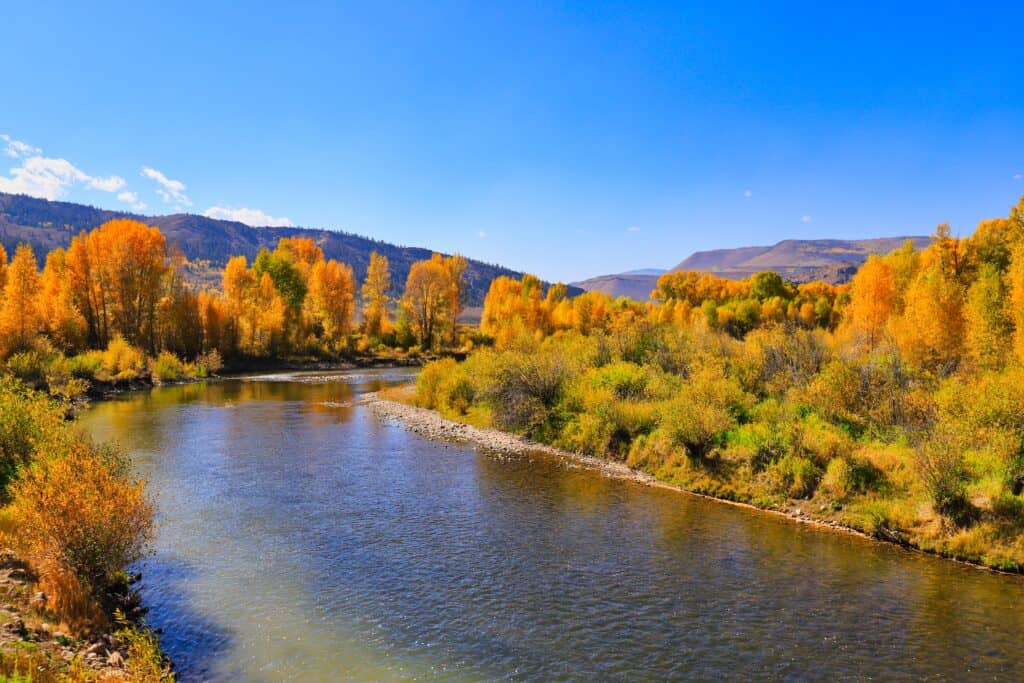
The Colorado River is calm in some places but can sweep a swimmer or kayaker away with one strong wave.
©Simon Morris / Flickr – License
While the Mississippi is known for its width, the Colorado River is renowned for its depth. This river carves through the Grand Canyon, presenting challenging rapids and dangerous drops for rafters and kayakers. What makes the Colorado River so dangerous? Its current is so strong, it can sweep a swimmer off their feet in one swift push.
The Colorado River poses a significant risk to human health for anyone attempting to swim. Not only does the water quality come into question with industrial runoff and sediment; risks rise with every weather event that happens, like high rainfall or unusually-strong winds. Swimmers may also face nasty stings and bites from the creatures like rattlesnakes, Black Widow spiders, and scorpions.
River flows kill dozens each year who underestimate the power of the water in the Colorado River. Stick to designated recreation spots of the river if you’d like to experience its beauty and leave the wild rushing waves to amphibians.
Indus River, Pakistan
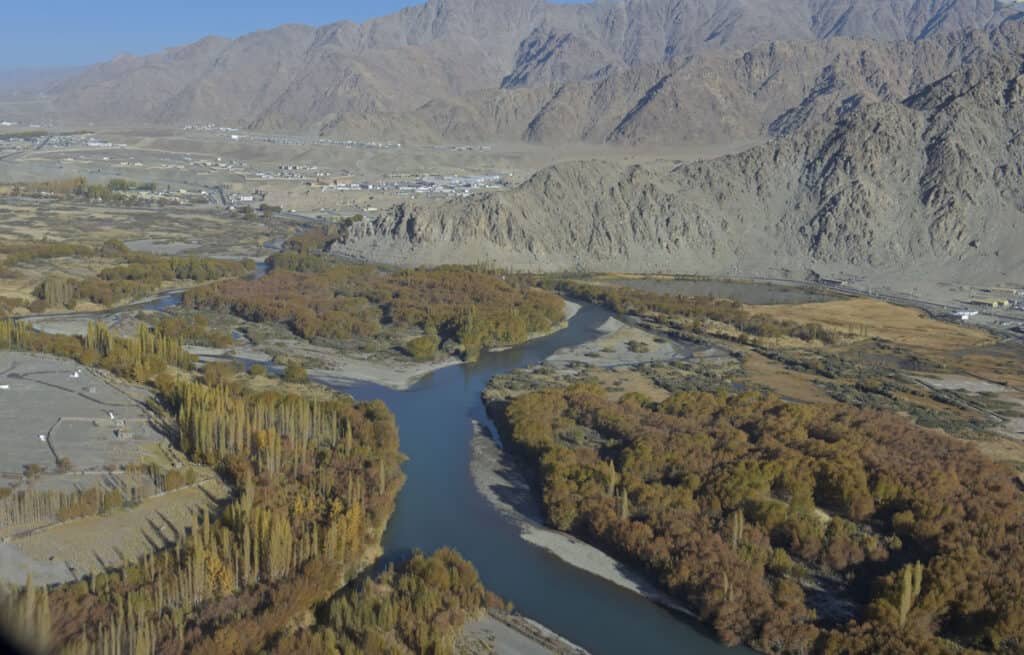
The Indus River is the longest river in Pakistan.
©iStock.com/Naresh Sharma
Several years ago, the Indus River was notorious for its flash floods, which were often triggered by heavy monsoon rains. These floods could be sudden and devastating, causing widespread destruction and loss of life.
Recently, the Indus River has seen a shocking change of pace and has slowly dried up and become toxic. In 2022, the Unrepresented Nations and Peoples Organization (UNPO) called for the Pakistani Government to address issues of toxicity in the Indus River, where the Sindhi community gets its water. In addition, the dwindling river has decimated the ecosystem around it, making the river and its area deadly for a unique reason: it’s becoming unlivable for humans and animals.
Pakistan remains one of the most water-stressed countries in the world; a statistic to which the Indus River contributes.
Paraná River, South America
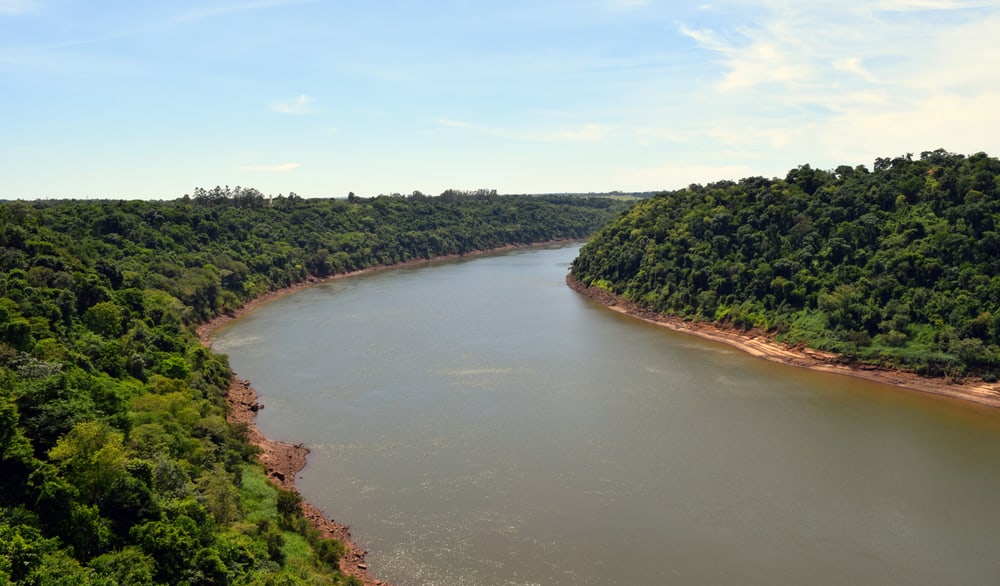
Strong currents and predatory inhabits make the Paraná River one of the most dangerous in the world.
©Jacek Kuc/Shutterstock.com
The Paraná River is home to the infamous Iguazu Falls, a series of massive waterfalls known for their power and beauty. However, the strong currents and turbulent waters below the falls make it extremely dangerous for swimmers and boaters. The currents of the Paraná River can pose a significant threat to swimmers and boaters, making it essential to exercise caution and adhere to safety measures.
Flooding is another hazard associated with the Paraná River. During periods of heavy rainfall, the river can overflow its banks, leading to widespread inundation and potential devastation for nearby communities. The flooding can cause additional landslides which result in property damage, displacement of residents, and death.
Moreover, industrial and agricultural activities along the river contribute to pollution, which poses risks to both human health and the river’s ecosystem. Discharges from factories, improper waste disposal, and agricultural runoff can degrade water quality and harm aquatic life.
If that’s not enough danger for you, the Paraná River is home to wildlife like caimans and piranhas, which can pose life-threatening situations to those venturing into the water.
Niger River, West Africa
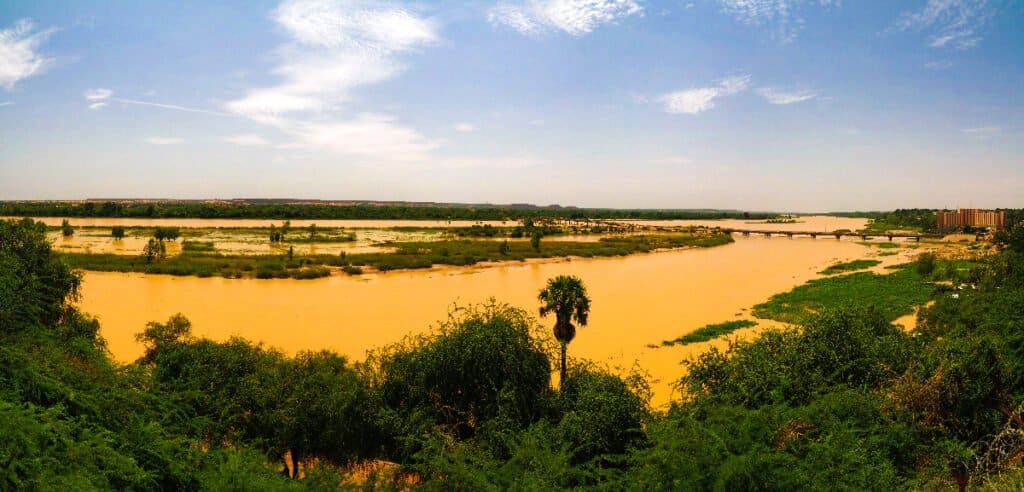
The Niger River was important to human growth in Africa throughout history.
©Homo Cosmicos/Shutterstock.com
The Niger River is prone to seasonal flooding, which poses risks to communities living along its banks. Additionally, the presence of hippos and crocodiles makes it hazardous for those who rely on the river. Hippos are notoriously territorial and aggressive, so hippo attacks are not uncommon to those using the Niger River for transportation and fishing. The Nile Crocodile can also inflict life-threatening injuries or death on humans who accidentally alarm the animal.
Flooding is another significant hazard of the Niger River. During the rainy season, the river can overflow its banks, causing widespread flooding and displacing communities. The resulting devastation can lead to property damage, loss of livelihoods, and a heightened risk of waterborne diseases.
Water pollution is a growing concern in the Niger River as well. Industrial activities, agricultural runoff, and inadequate waste management contribute to the contamination of the river, posing risks to both human health and the river’s fragile ecosystem.
Mekong River, Southeast Asia
The Mekong River has treacherous rapids and unpredictable water levels, especially during the monsoon season. The dense fog and narrow passages add to the difficulty of navigating this dangerous waterway. Did you know, despite its danger, the Mekong River supplies water to nearly 60 million people?
The Mekong River, though battered by overfishing, damming, and logging, remains a force to be reckoned with in all six countries it runs through, Cambodia, China, Laos, Myanmar, Thailand, and Vietnam.
Unlike other murky rivers on the list, the Mekong River is relatively safe in low times to swim in because the cloudiness comes from sediment rather than pollution. It’s not drinkable on its own because of the vast amount of sediment present. Again, the danger of the Mekong lies in its ability to flood and damage nearby villages rather than its pollution or wildlife.
Rhine River, Europe
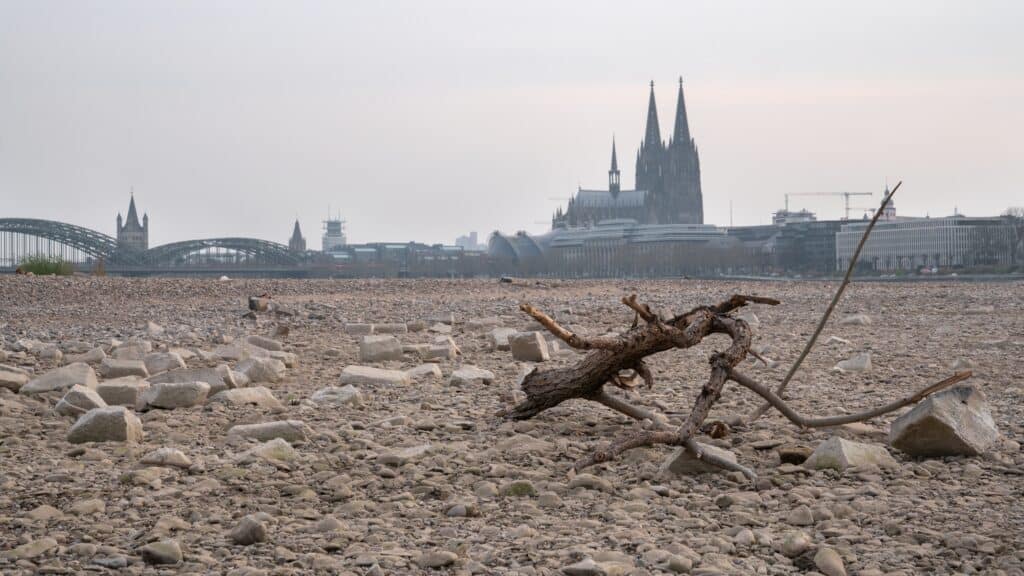
The Rhine River’s rocky shores are deceptively safe.
©alfotokunst/Shutterstock.com
The Rhine River’s fast currents, strong winds, and heavy ship traffic make it a challenging river to navigate. Collisions and accidents are not uncommon, making it a dangerous waterway for both commercial and recreational vessels.
While some locals opt to bathe or swim in the Rhine as their ancestors once did, the decision can be life-threatening. Tankers use the Rhine regularly to ferry goods which creates a suction effect, even near the banks. Swimmers can easily get trapped in whirlpools and drown.
Though seemingly placid, the Rhine River’s rushing waters are so dangerous that the specialized rescue team in Germany (the Deutsche Lebens-Rettungs-Gesellschaft) asserts that their rescue attempts almost always end in fatalities.
Murray-Darling River, Australia
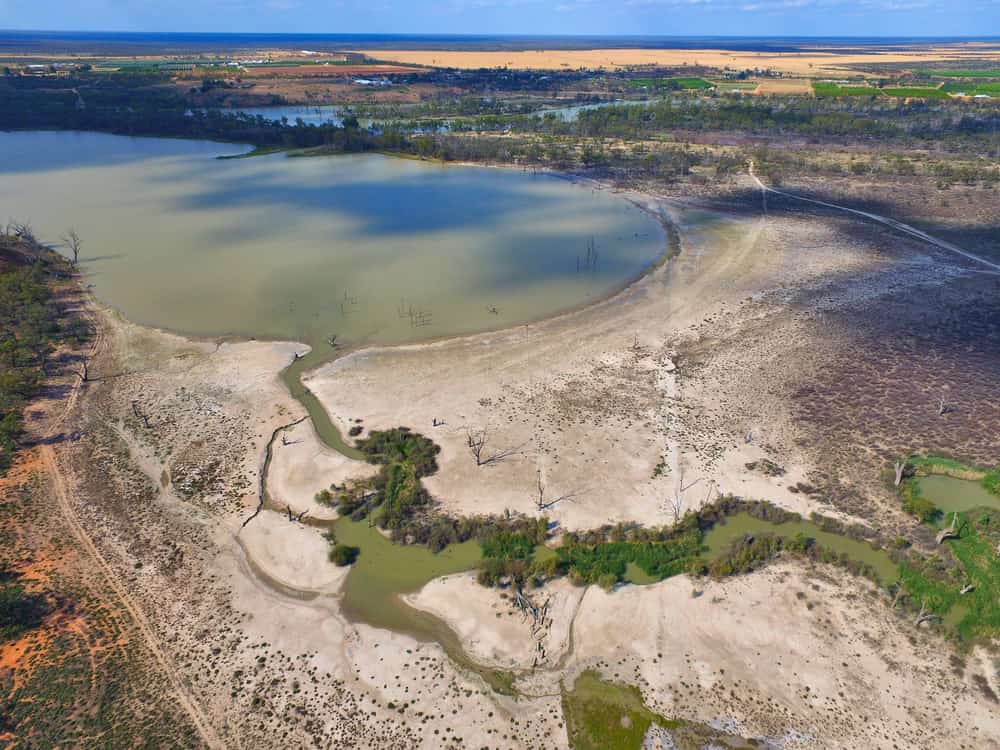
The drought-stricken Murray-Darling River continues to dry up in Australia.
©Hypervision Creative/Shutterstock.com
Australia’s longest river system, the Murray-Darling, is prone to droughts and has faced significant environmental challenges. The river’s low water levels and poor water quality can be dangerous for wildlife and humans.
Recently, the Murray-Darling Basin Plan aimed to refill Australia’s most important river system to protect the plants, animals, and ecosystems along the banks. However, only .5% of the promised water has gone back into the river. Native fish to the Murray-Darling River have sought refuge in flooded wheat fields from suffocating in the river’s hypoxic blackwater.
Not only do the fish and wildlife around the Basin suffer; the Murray-Darling River provides drinking water to 2.3 million Australians. The river also needs to stay clean and swimmable for the recreational tourism that drives Australia’s economy.
Nile River, Africa

The Nile
Crocodile
inhabits much of the Nile River.
©diegooscar01/Shutterstock.com
The Nile River rivals the Amazon for danger and comes out on top thanks to its strong currents, wildlife dangers, and waterborne diseases.
Can you swim in the Nile? It’s not illegal by any means, but chances are you’ll be much safer on the shore. The Nile poses many dangers to humans, including:
- Wildlife. Nile crocodiles, hippos, and Black Mambas are no joke. Documented human attacks and nearly-fatal venom make both creatures a significant danger to those looking to take a swim.
- Disease. Schistosomiasis, bacterial infections, West Nile Virus, and Malaria await your body when you dip a toe into the Nile River. Though it has sustained life in Egypt and Africa for hundreds and thousands of years, pollution has corrupted the quality of the water.
Overall, the Nile River remains a historically significant but fatal river for humans.
Fraser River, Canada
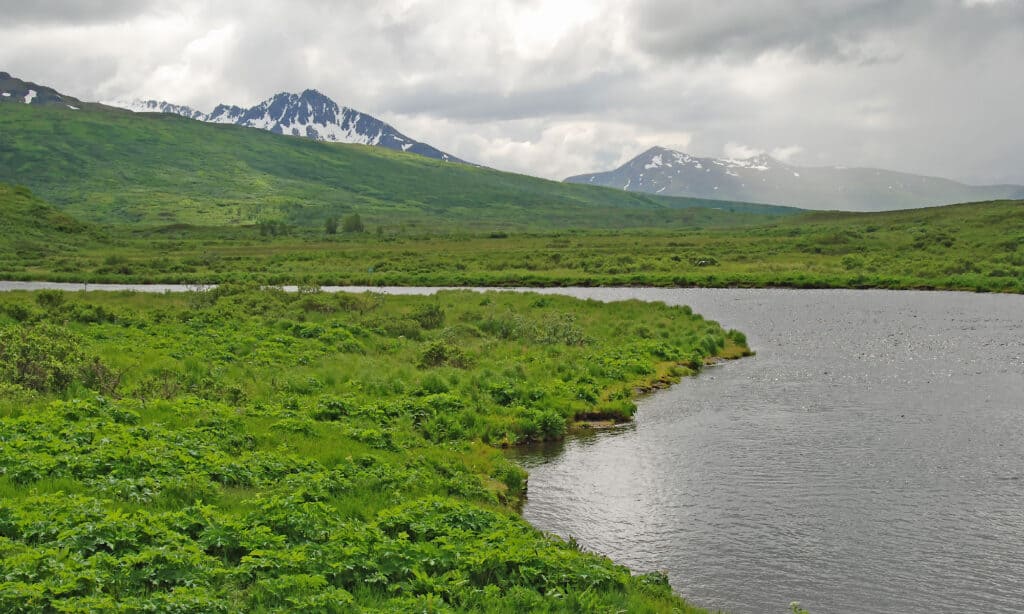
Unpredictable weather and strong currents make the Fraser River both beautiful and a force of nature.
©iStock.com/Wildnerdpix
The Fraser River in British Columbia is known for its strong currents and unpredictable weather conditions. It poses challenges to both commercial and recreational boaters, particularly during periods of heavy rain and snowmelt. The river’s vast watershed and its connection to multiple tributaries increase the potential for flooding events, making it a constant concern for nearby residents.
One of the primary risks associated with the Fraser River is its unpredictable currents and strong undertows. Swimmers and boaters who venture into its waters without proper precautions can quickly find themselves in dangerous situations. The river’s flow can vary greatly, leading to sudden changes in water levels and rapid currents that are difficult to navigate.
In addition to the natural hazards, industrial activities along the river, such as shipping and mining, can introduce pollutants into the water, posing risks to both human health and the delicate ecosystem. Efforts to manage and mitigate these dangers are crucial to ensure the safety and preservation of the Fraser River and its surroundings.
Citarum River, Indonesia
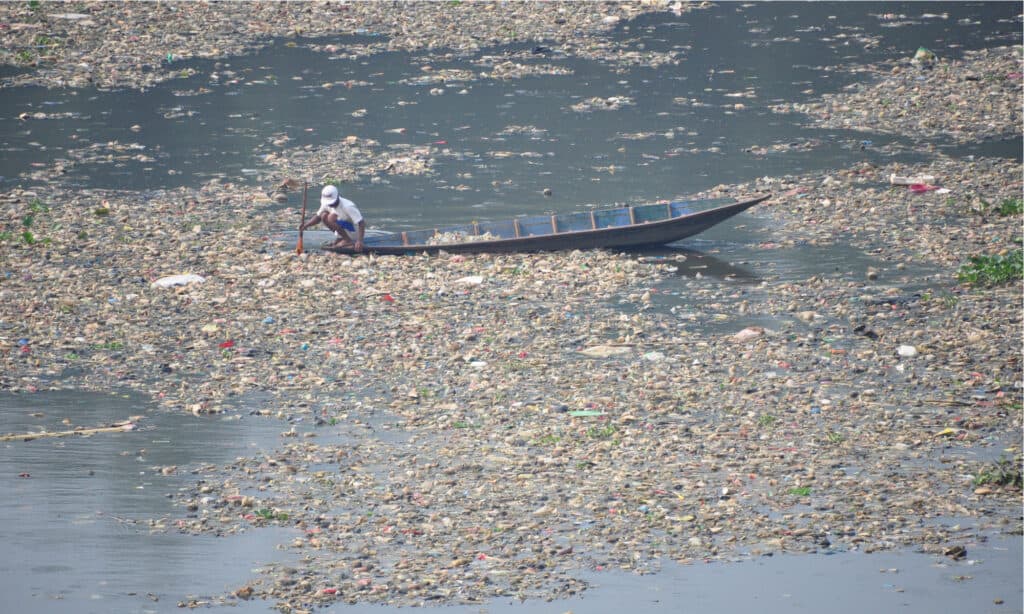
The Citarum River is one of the most polluted rivers in the world.
©Bastian AS/Shutterstock.com
The Citarum River in Indonesia is often referred to as the most polluted river in the world. It suffers from severe industrial and domestic pollution, with untreated waste, toxic chemicals, and garbage dumped into its waters. Contaminants found in the Citarum River include arsenic, lead, mercury, sulfites, and heavy metals. It has been deemed unsafe for human use, yet five million people rely on it as a life source.
The pollution levels are so high that the river poses serious health risks to those who come into contact with it. The contaminated water not only endangers human lives but also impacts the ecosystem and wildlife in the area.
Swim, Drink, and Boat At Your Own Risk
While the Mississippi River is a formidable waterway, there are numerous rivers around the world that present greater dangers. From treacherous rapids and deadly wildlife to flash floods and waterborne diseases, these rivers demand respect and caution from anyone who ventures into their waters. Exploring the hazards of these rivers serves as a reminder of the power and unpredictability of nature.
The photo featured at the top of this post is © iStock.com/Phototreat
Thank you for reading! Have some feedback for us? Contact the AZ Animals editorial team.






